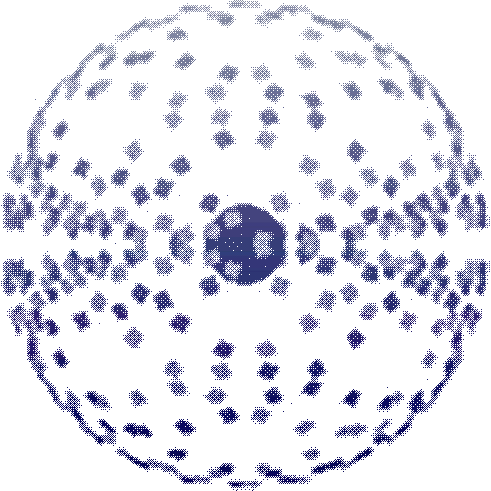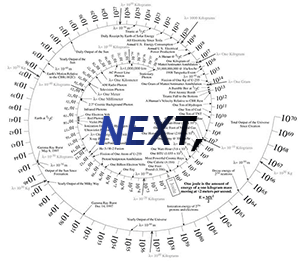-
Roadmap to the Stars

On extraterrestrial colonisation and being human
by Herbert Wright
A “Dyson Swarm” is a shell of satellites completely surrounding a star and sucking up all its energy. Animation developed from the original idea by Freeman Dyson in 1960. (Image: Karl Bednarik)
-
With NASA determined to launch astronauts again and China now a space power, colonising space is back on the agenda. Architecture writer and astrophysics graduate Herbert Wright looks at how we could ultimately become masters of the galaxy.
In 1963, Soviet astrophysicist Nikolai Kardashev thought he may have spotted an alien super-civilisation. He was investigating an object called CTA-102, which we now know as a quasar – a galactic nucleus younger and more energetic than any in our vicinity. These intense sources of radio waves were then unknown, and Kardashev saw extraterrestrials as a plausible explanation. He went on to propose a scale for assessing a civilisation’s advancement, calibrated by the energy it is able to harness. He thought CTA-102 could be a Type II civilisation, one which can harness all a star’s power, or even a Type III, utilising the power of a whole galaxy.
So far, human civilisation does not even rate as a Kardashev Scale Type I: one able to utilise all solar energy falling onto a planet. However, vast solar satellites or breakthroughs in nuclear fusion could bring us to that stage in the foreseeable future. If Type I is conceivable, perhaps we could ultimately become Type III and colonise the whole galaxy. But why should we expand into space? The bottom line is that our survival chances increase if we don’t place all our eggs in one basket: Earth. So what might be our roadmap to a galactic future?
Image: A “Dyson Swarm” of satellites can be used to store light and energy from a star, but also to project it as powerful collimated, or parallel, beams across the universe. (Courtesy Orion’s Arm)
Ideally, habitats should be self-sufficient closed ecosystems. The most crucial ingredient is water. Luckily there’s a lot of it out there in the Solar System, especially on frozen moons, dwarf planets and smaller bodies further out from the Sun – but solar power decreases the farther away one gets. One prime colonisation target would be the dwarf planet Ceres in the asteroid belt, with its plentiful water and proximity to the Sun. -
Worlds offer gravity, which a spaceship or space station lacks, but it can be simulated with rotation, like the great wheel of Space Station V in Kubrik’s film 2001: A Space Odyssey. British scientist JD Bernal first proposed rotating space colonies in 1929. Currently, the most realistic rotating design is the American Institute of Aeronautics and Astronautics’ Kalpana One, a cylinder to house 3,000 individuals, using lunar soil for radiation shielding.
With foreseeable technology like this delivering sustainable bases, it is easy to imagine humanity expanding out across the Solar System. If the expansion was exponential, as it has been on Earth, our power levels might reach Type I within centuries. The most solar power we could harvest would be by completely surrounding the Sun with power collectors, coincidentally reaching Type II status. This concept is called the “Dyson Sphere”, after mathematician Freeman Dyson who wrote about in 1960, but rather than a single structure (an engineering impossibility), it would be a swarm of satellites.
Image: The exponential spiral of the Kardashev Scale measures the energy output a civilisation can harness as a measure of its advancement.
Stepping beyond the Solar System to the stars requires a vast leap in scale. Light takes four hours to reach the furthest major planet, Neptune, but four years to reach the nearest star, Proxima Centauri. Our fastest artificial object yet, Voyager 1, would take 70 millennia to get there. Our galaxy alone, the Milky Way, is 100,000 light years across. Nevertheless, serious studies using foreseeable technology have been done, notably Project Daedalus in the 1970s by the British Interplanetary Society. Its fusion technology would power a robot probe ensemble to a star six light years away, reaching it without decelerating in just fifty years. Project Icarus, a more international follow up to Daedalus, is due to report back by September 2014.
There’s good news for would-be colonists of other solar systems. With over a thousand known planets orbiting other stars, or exoplanets, now confirmed, we can project how many Earth-like (so-called “Goldilocks zone”) planets there may be in the Milky Way: 15 to 30 billion. Each is potentially a new home for humanity.
-
Herbert Wright is an architectural journalist and historian, author and art critic. He graduated in Physics and Astrophysics from the University of London.
The bad news is that with realistic technology it would take more than a human lifetime to reach them. The only way to transport humans to other stars would be in vessels hosting several generations, or placing settlers in suspended animation.
The trouble with humans is that we take up space and we travel with tonnes of luggage – our bulky life support systems. There is an alternative to lugging all this across space: we could beam ourselves to the stars. The transport versus transmission issue is a no-brainer, all we need do is to tackle the challenges of creating a suitable receiving environment, and encoding all the data that constitutes our minds, bodies and their processes. Not easy.If a suitable planet were identified, then robots could build a habitat on it before humans arrive. In the 1940s, the mathematician John von Neumann mapped out the concept of self-replicating machines, named after him. Such machines could perform different functions – mining, material processing, engineering, 3D printing. With lots of them, simple instructions could lead to the emergence of swarm intelligence. Simple creatures can build complex structures. This is inspiring current research into autonomous construction robots at places like Harvard’s Wyss Institute of Biologically Inspired Engineering. Conceivably, nanotechnology could minituarise the initial seed of self-replicating machines enough so that an entire planet might be prepared for colonists by a package that arrived in a small can.

Image: Stelarc, “The Third Hand”, 1980. A robotic performance piece by the Australian-based artist expressing the gradual cyborgisation of humanity, with a prosthetic made of cast latex, aluminum, cables, and a battery pack. (Courtesy the artist, Scott Livesey Galleries)
Most complex of all would be an infrastructure that converted transmitted data into human material, whether as zygotes, or even cloned adults replete with memories. But if we were sending just genetic code, why not edit it to adapt for conditions on planets that are not Earth-like whilst we are at it? Tardigrades, a 500-million-year-old family of tiny animals, have been known to survive exposure to deep space. Perhaps their genes could inform man-machine hybrids which don’t even need a comfortable planet to live on. In fact, why use biological matter at all to contain our minds?
This has all raised big questions. Perhaps data, not energy, is a better measure of civilisation level? Isn’t humanity already in decline with falling birth rates anyway? And what exactly is human? We may yet spawn a Kardashev Type III civilisation, but by then, we may have become an entirely alien species. I
-
Search
-
FIND PRODUCTS
PRODUCT GROUP
- Building Materials
- Building Panels
- Building technology
- Façade
- Fittings
- Heating, Cooling, Ventilation
- Interior
- Roof
- Sanitary facilities
MANUFACTURER
- 3A Composites
- Alape
- Armstrong
- Caparol
- Eternit
- FSB
- Gira
- Hagemeister
- JUNG
- Kaldewei
- Lamberts
- Leicht
- Solarlux
- Steininger Designers
- Stiebel Eltron
- Velux
- Warema
- Wilkhahn
-
Follow Us
Tumblr
New and existing Tumblr users can connect with uncube and share our visual diary.
»Don‘t fight forces, use them.«
Richard Buckminster Fuller
Keyboard Shortcuts
- Supermenu
- Skip Articles
- Turn Pages
- Contents



